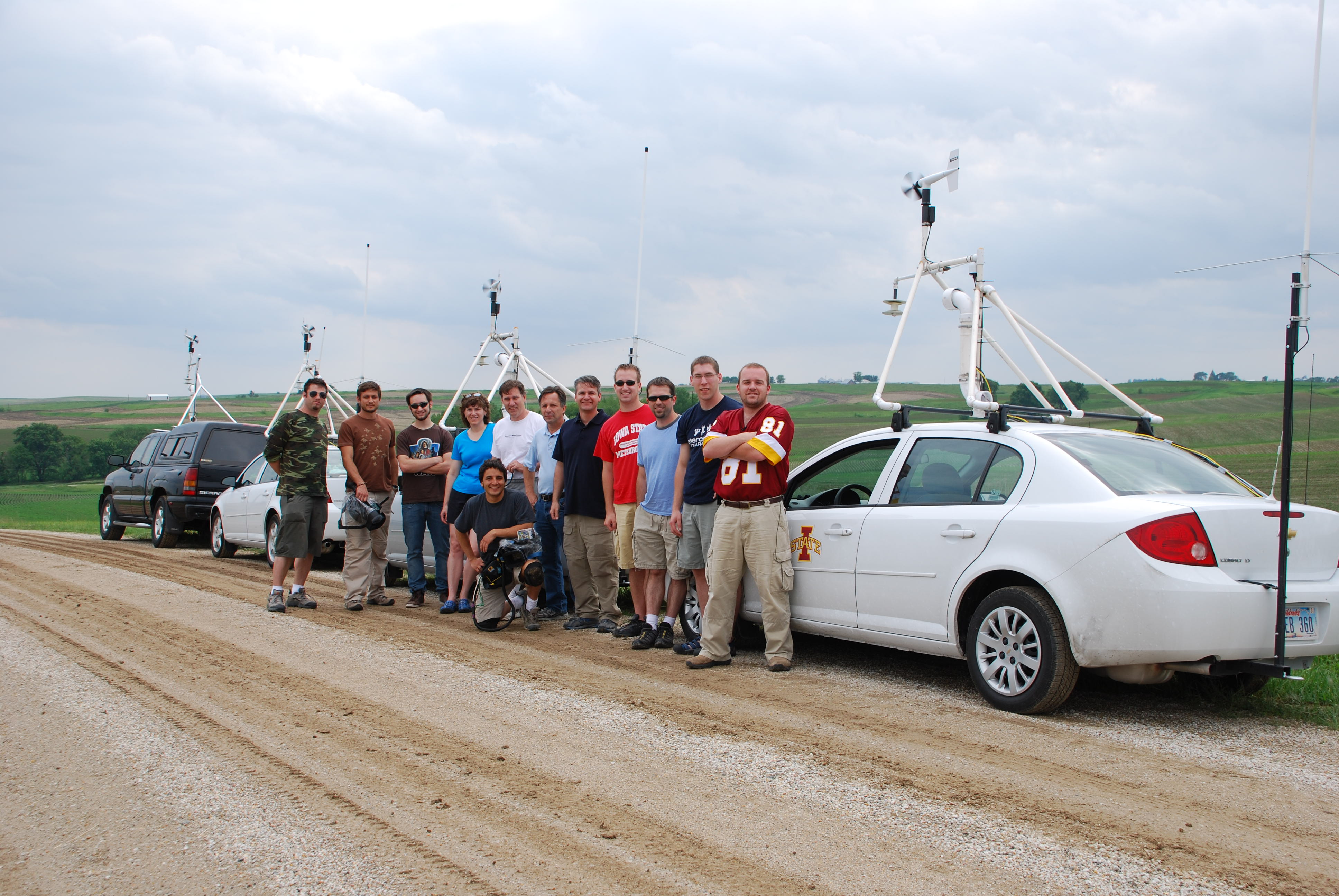How Tim Samaras Influenced My Life
Dr. Chris Karstens
2 June 2013

Like so many, I awoke to the tragic news that Tim Samaras, his son Paul, and Carl Young were killed in the El Reno, OK tornado of 31 May 2013. And like so many, I am still in utter shock and disbelief. As a long-time contributing member of TWISTEX and friend,
the news hits very deep. Normally, I am not the type to blog or express personal experiences publically, but I feel compelled to share my story, because without Tim and his influences, I likely wouldn't be where I am today.
I first met Tim Samaras when he
came to speak at the Central Iowa NWA conference in 2005. Only one word could describe my impression of his work: awesome. At the time (a sophomore Meteorology student at Iowa State) I thought, wow, how cool would it be to do the kinds of things he does!
Truly inspiring. Then, during the fall semester of my senior year, I received an email from Dr. Bill Gallus, asking if I had ever considered graduate school, and he offered me an opportunity to be involved with his research studying tornadoes,
in part, using data gathered by Tim and Carl. At the time, graduate education was not something I was really considering (I was preparing for a career in Broadcast Meteorology), but an opportunity like this doesn't come around very often and it was obviously
too big to pass up.
For the next two years, I worked on a Master's degree under Dr. Gallus as part of an NOAA grant to better understand the low-level environment in a tornado and the effects of tornadoes on built structures. Tim and I interacted on many occasions, including participation as a mobile mesonet leader with TWISTEX under the guidance of Dr. Bruce Lee and Dr. Cathy Finley. For me, it wasn't all the cameras or notoriety that excited me, it was the data (nerd, I know). I got to play around with all sorts of the cool data that Tim collected and would show at conferences, like pressure and temperature measurements from the HITPR probes, and camera probe videos the 11 June 2004 tornado in northwest Iowa. The level of guidance I received from Tim was equivalent to that of a graduate committee member. Our work was formally published in the July issue of Monthly Weather Review in 2010. Not only was this my first formal publication, but for Tim, it was his first as well. What an honor it was for me to be mentored by Tim and to assist in his contributions to science.
In 2009, I made the decision to pursue a doctoral degree in Meteorology at Iowa State and continue working with Dr. Gallus, Tim and TWISTEX. During this time, I developed a custom data acquisition software for the mobile mesonets (called 'Sidekick'). I incorporated many of Tim's (and the group's) ideas for improved coordination in the field, such as 20-second geo-location updates and 1 km buffer rings to ensure adequate spacing of the mobile mesonets while operating on a supercell. This resulted in many well-coordinated deployments, most notably the Bowdle, SD tornado of 22 May 2010 (also formally published in MWR).
While participating with TWISTEX, I met Carl Young and Tim's son, Paul. I had several conversations with them during the many late night dinners, hotel stays, early morning breakfasts, and chats over the radio. I always looked forward to these energetic and enthusiastic conversations. I think we all know that Paul was on the verge of uncovering his unique talent with photography. He was good, and, like his dad, was motivated to make himself better each and every day. Paul even took time to show me how to take better pictures. Carl's drive and passion to chase storms was nearly unmatched. There was truly no other place Carl would rather be, than under a meso. Tim and Carl were a great duo.
Currently, I work as a scientist at CIMMS/NSSL in Norman, OK. Without Tim's guidance and influence during my graduate education, I would not be living in Oklahoma doing what I am doing. I, like so many, owe a lot to him. No amounts of words can describe or summarize this. Going forward, I will do my best to continue living by the example they set. To greet people with a smile and hand shake. To treat everyone as colleagues, regardless of merit. And to remain passionate and motivated about the science of Meteorology and the understanding of tornadoes for the greater good of our society.